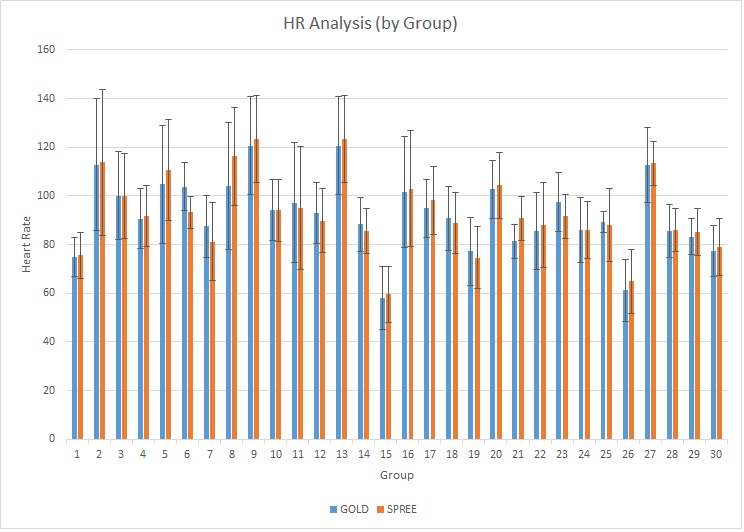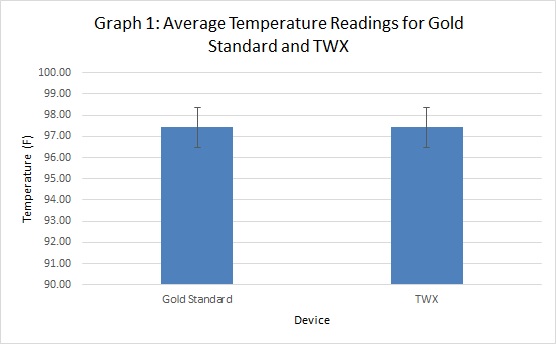BME100 f2014:Group16 L3
| Home People Lab Write-Up 1 | Lab Write-Up 2 | Lab Write-Up 3 Lab Write-Up 4 | Lab Write-Up 5 | Lab Write-Up 6 Course Logistics For Instructors Photos Wiki Editing Help | |||||||
|
OUR TEAM
LAB 3A WRITE-UPDescriptive Statistics
AnalysisFor the temperature readings, the Paired T-Test result was 0.00000000 meaning that there is a statistically significant difference between the temperature readings on the Spree and Gold Standard Thermometers. For both data sets, a paired t-test was chosen because the same subject was tested and there were not multiple groups being analyzed. Moreover, the Pearson r-coefficient for the temperature graph was 0.09 meaning that there was nearly no relationship between the two methods of temperature measurement. Alternatively, the t-test result for heart rate yielded a value of 0.49 meaning that there was not a statistically significant difference between the Spree headband and the Gold Standard. Furthermore, the R- value of 0.96 depicts a nearly perfect linear correlation between the two methods of heart rate monitoring.
Results 
   
Summary/DiscussionOne design flaw with the Spree was when preparing for the trials, the bluetooth connectivity did not always work and impeded groups from being able to get any data at all. It also froze briefly in the middle of the trials which subsequently threw off some of the readings. Another problem with the connectivity is that when the app itself when looking for other members phones, it would only find some of the phones but not all. So overall, the connectivity needs to be improved. The Spree device also does not accurately record temperature and was significantly different from the gold standard readings. This is because the Spree measures temperature on the surface of the skin and the skin is constantly regulating body temperature and would not be able to give an accurate value for actual internal body temperature. Aesthetically the device itself was not satisfactory because it is worn on the subjects forehead which can be inconvenient for the user. Though this does not affect the readings or accuracy of the product, it does effect the marketability. A less conspicuous design would lead to greater sales.
LAB 3B WRITE-UPTarget Population and NeedThe target market of the TWX Temperature Wrist Extreme is a focused towards athletics and fitness focused on performance and endurance ages 18-55. Accurate body temperature is correlated with heart rate can establish a point of reference for athletes to measure the effectiveness of their core performance. The TWX satisfies the need for accurate internal temperature which has traditionally be inaccurate or represented by colors or arbitrary numerical values.
Device Design
Inferential StatisticsThe paired, 2 tailed t-test returned a p value of 0.995 meaning that there is no significant statistical difference between the average temperature readings of TWX and the Gold Standard. Furthermore, the standard deviations of TWX and Gold Standard were nearly identical meaning that the precision of both devices are comparable. 
Graph 
|
|||||||

